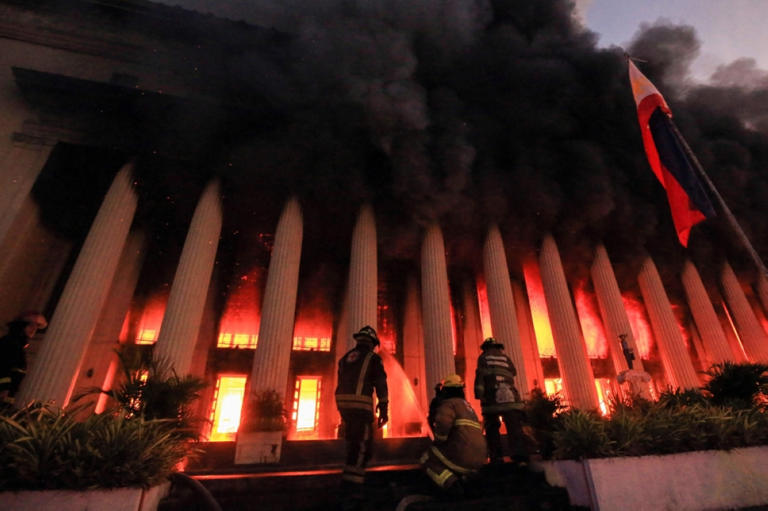AlchemyPinoy
Member

The Bureau of Fire Protection (BFP) has declared that the fire that gutted the historic Manila Central Post Office building in Liwasang Bonifacio in April was an accident. The investigation into the cause of the blaze has been closed and solved, according to the BFP. The fire clearance certificate issued by the BFP indicates that the fire originated in the southern part of the basement, specifically at the Mega Manila Storage Room (GSS), where office supplies, thinners, and paint cans were piled in close proximity to car batteries.
The BFP report stated that the "combustibility of the load contents" and its enclosed set-up resulted in the build-up of heat that caused an explosion. The cause of the fire was the "sudden self-discharge of the car batteries resulting in a thermal run-away," based on the pieces of evidence gathered, the statements of the witnesses, and the result of the laboratory examinations.
The BFP also concluded that the presence of the internal short circuit, the hydrogen and the volatile gases contained in the battery, and the presence of oxygen as the oxidizing agent had caused the fire. The blaze started at 11:41 p.m. on May 21 and was put out 31 hours after. The initial cost of damage was ₱300 million.
Postmaster General Luis Carlos welcomed the result of the investigation undertaken by the BFP in a statement. He said, "We will now move on and concentrate primarily on the recovery and rehabilitation of the iconic building." The building, designed in the neoclassical style by Filipino architects Juan Arellano and Tomas Mapua and completed in 1926, serves as the home of the Philippine Postal Corporation (PHLPost).
The Manila Central Post Office building is a historic landmark in the Philippines, and its destruction has caused a great deal of concern and sadness. The cause of the fire being an accident is a relief to many who feared that the fire was caused by arson or other malicious intent. The BFP's report provides a thorough explanation of the cause of the fire, which will help prevent similar incidents in the future.
The BFP's report highlights the importance of proper storage and handling of hazardous materials, such as car batteries, thinners, and paint cans. The combustibility of the load contents and its enclosed set-up resulted in the build-up of heat that caused an explosion. This underscores the need for proper ventilation and storage protocols when dealing with hazardous materials.
The report also emphasizes the importance of proper maintenance and inspection of car batteries. The presence of the internal short circuit, the hydrogen and the volatile gases contained in the battery, and the presence of oxygen as the oxidizing agent had caused the fire. This serves as a reminder to vehicle owners to ensure that their batteries are properly maintained and inspected regularly.
The BFP's report will be helpful to the Philippine Postal Corporation (PHLPost) in its efforts to recover and rehabilitate the iconic building. The cost of damage was significant, and the recovery and rehabilitation process will be a challenging one. However, with the cause of the fire being an accident, the PHLPost can focus its efforts on rebuilding and restoring the building to its former glory.
In conclusion, the BFP's report on the cause of the fire that destroyed the Manila Central Post Office building provides a thorough explanation of the incident. The report highlights the importance of proper storage and handling of hazardous materials and the need for proper maintenance and inspection of car batteries. The report will be helpful to the PHLPost in its efforts to recover and rehabilitate the iconic building.
Source Manila TImes